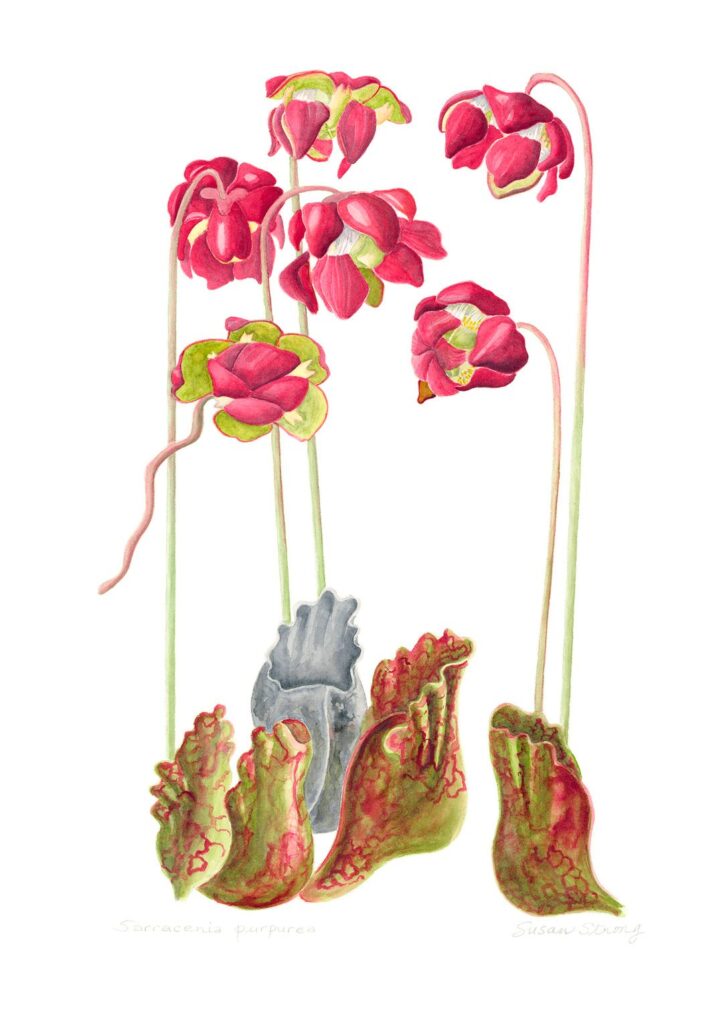This week we have been planning to put up a new sign placed next to the slough in Herbster to tell people about this beautiful and unusual place. This slough is really also a bog. Leading into Lake Superior, it is a kind of backwater where small streams feed into the big lake. And along one area the water is quiet enough that a web of plant roots and moss have created a mat over the water. On this mat of floating plants, very special bog plants have been growing for many years.
One of these distinctive plants is the Pitcher Plant (Sarracenia purpurea). This plant has an unusual “pitcher” at the base, where it traps insects such as flies. When the little insects crawl into the pitcher, they are trapped and cannot get out again. When their little bodies decay, the plant digests the nitrogen and phosphorus nutrients that help it to grow. Roots of this plant are embedded in the grass and moss that create the quaking layer on top of the water.

Another plant found in a quaking bog is the small Rose Pogonia orchid (Pogonia ophioglossoides). This six inch pink orchid also floats on the water attached to this mat of mosses and grasses. Often referred to as the “snake mouth orchid,” this small pink flower doesn’t seem in any way threatening. Does it look like a snake mouth to you?
Bogs are usually formed by precipitation, not from runoff or streams. In this quaking bog there are small waterways as well. Bogs collect peat moss as the plants that form the floating layer decay. This creates a very acidic environment and often the water turns copper-colored. Over many years peat moss may accumulate to fill the water. Sometimes peat is harvested for fuel for stoves.
This kind of environment is very easily damaged by too many people walking on it, or by other kinds of human degradation. The slough here is close to the dock where boaters and kayakers launch their boats. Fortunately no motorized vehicles are allowed. This is a beautiful serene place.


